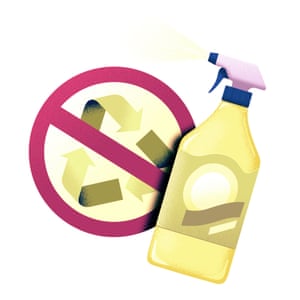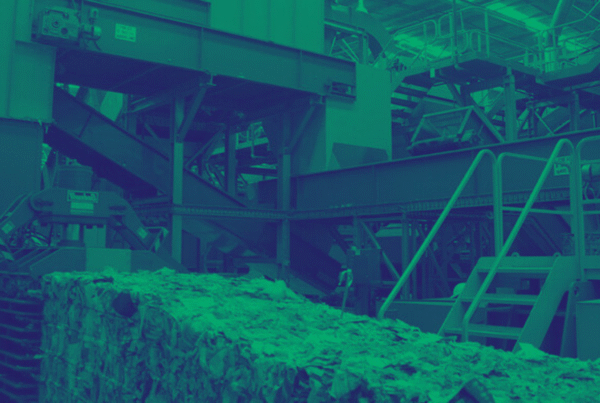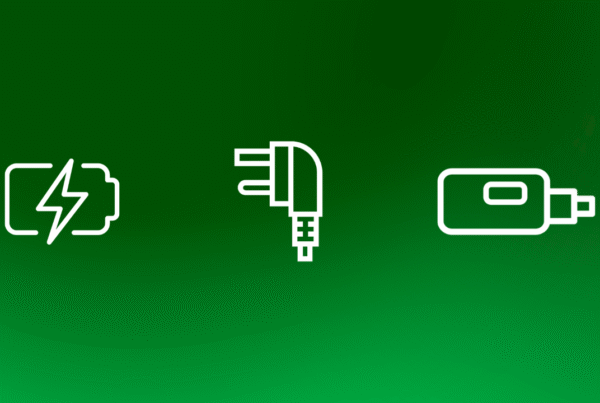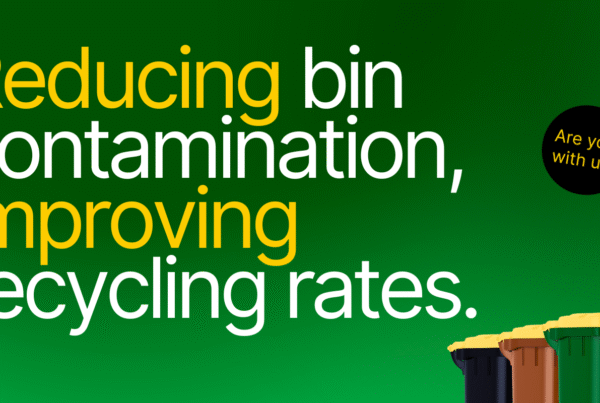From singing birthday cards to baby food pouches, a growing trend of mixing materials is making recycling even harder
The musical cards, which play a recording when opened, look like plain cardboard, making them easy to accidentally throw in the recycling bin. But experts say the insides are laced with cheap electronics and toxic batteries – making them a nightmare to dispose of.
Such cards are just one example of what recyclers say is a growing trend in mixing different materials to create new types of products and packaging, which is making the work of recovering reusable products much harder.
“I call them ‘horrible hybrids’,” said Heidi Sanborn, who heads up the National Stewardship Action Council, a network of groups that seeks to get manufacturers to take responsibility for the proper disposal of the products they sell. “They are made of multiple materials or materials that are impossible to recycle. It’s a mushing of things.”
Discarded single-use plastics have become an international environmental flashpoint, as they have turned up in the bellies of birds and fish, flooded pristine beaches in remote countries with litter and even been detected in microscopic quantities in rainwater. Plastic products designed to be used for a few minutes can take decades or longer to decompose.
Studies have also shown the proliferation of single-use plastic is accelerating climate change through greenhouse gas emissions at every stage of its lifecycle. While environmental groups fighting to reduce the use of throwaway plastics have gained visibility in the last few years, the oil industry is investing heavily in a huge surge of plastic production – which the industry expects to grow by 40% by 2030. The increase in plastics production is to be fueled by the ultra-cheap shale gas flowing from the US fracking boom. The petro-chemical industry has already invested $200bn to build new cracking plants that separate ethane from gas to produce the ethylene needed to make plastics. Another $100bn in investments is planned.
Industry often points to recycling as the solution to all those new plastics. Yet only a fraction of plastic products end up recycled, a problem that was exacerbated when China shut its doors in 2018 to the deluge of plastics from other countries that it had previously been recycling.
Examples include shoes and clothing embedded with electronics; the increasingly popular flexible plastic pouches used to package things like detergent pods, rice and baby food; and recyclable bottles and cans tightly wrapped in extra plastic labeling.
Tiny batteries

Singing cards and other products with tiny electronics inside them are especially vexing to recyclers. Not only do they include toxic electronic waste, but when the small batteries get crushed in the machinery inside recycling plants, they have been frequently known to cause fires.
“One of the biggest problems for recyclers right now is all the products containing lithium ion batteries, such as the singing cards, balloons and other novelty products,” said Kate Bailey, the director of research at Eco-Cycle, a Boulder, Colorado, recycler. “These batteries can spark easily when they get caught in the processing equipment or run over by a front-end loader, and these sparks can lead to disastrous fires in the recycling center.”
Recyclers are urging manufacturers to simplify the products they make to make it easy to recycle them. But they say consumers can also help by searching for more recyclable products – and then voting with their dollars.
Bad: singing greeting cards
Better: regular cardboard cards
Best: cards made from recycled paper or E-cards
Bad: musical mylar balloons
Better: colorful pinwheels
Best: edible bouquets
Bad: tennis shoes with light-up wheels
Better: regular tennis shoes
Best: shoes made of natural or recycled materials
Plastic pouches

Another growing menace for recyclers are the plastic pouches increasingly used to hold everything from laundry detergent pods to cereals and juices. This flexible packaging is made with many thin layers of different types and colors of plastic and is sometimes layered with foil and wax.
Manufacturers and plastic producers tout these pouches for making packages smaller, reducing shipping costs and increasing the shelf life of foods. “A few thin, carefully chosen layers mean more value, less footprint,” says a video by the plastic producer lobbying group, the American Chemistry Council, promoting such pouches.
But recyclers say they are pretty much impossible to recycle. And they are apt to end up in the ocean and take decades to biodegrade. When choosing laundry detergent, they say, consumers might look for products in unlined boxes or try new formulations such as concentrated detergent strips, which require no plastic packaging.
Bad: detergent pods packaged in film plastic bag
Better: detergent in recyclable see-thru plastic jugs or cardboard box
Best: laundry detergent strips
Bad: Baby food sold in plastic pouches
Better: The old recyclable glass jars
Best: Make your own from fresh fruits and vegetables
Plastic labels

Another bugaboo for recyclers is the increasing use of non-recyclable wrappers around perfectly recyclable bottles and cans. For instance most spray cleaners come in bottles made of high-density polyethylene, which can be readily recycled. But first consumers must remove the spraytops, as they are made from different plastics and are not recyclable. Then consumers must find a way to pry off the brightly-colored, printed plastic wraps that packagers are increasingly wrapping around bottles to make the labeling more attractive.
“Who does all that? Nobody,” said Sanborn. “We’ve made recycling too complicated. Who has the time to read a manual for everything they get rid of?”
Instead consumers can look for clear-colored or white bottles with the labeling printed on the bottle itself. It’s even better if they choose brands committed to using recycled plastic to make these bottles, such as Method cleaning products. Another great option is for customers to mix their own cleaners and reuse the plastic bottles.
Bad: plastic spray bottle wrapped with an extra layer of printed plastic
Better: white or transparent bottle without the extra wrap
Best: make your own cleaner and refill the bottles
Bad: beer cans with plastic wraps or vinyl stickers
Better: regular, very recyclable cans
Sanborn says that the best recycling outcomes happen when companies pay to create programs to make sure the waste from their products gets recycled in the end. Such programs are often mandatory in other countries. In the US, a few companies are promoting this type of effort voluntarily, such as a program to recycle plastic disposable razors coordinated by the company Gillete in partnership with the recycling enterprise, Terracycle. The program allows consumers to mail in their razors to be recycled.
“We should have it so these companies have to have an end-of-life system for all their products,” said Sanborn. “That’s producer responsibility.”
Source: www.theguardian.com






